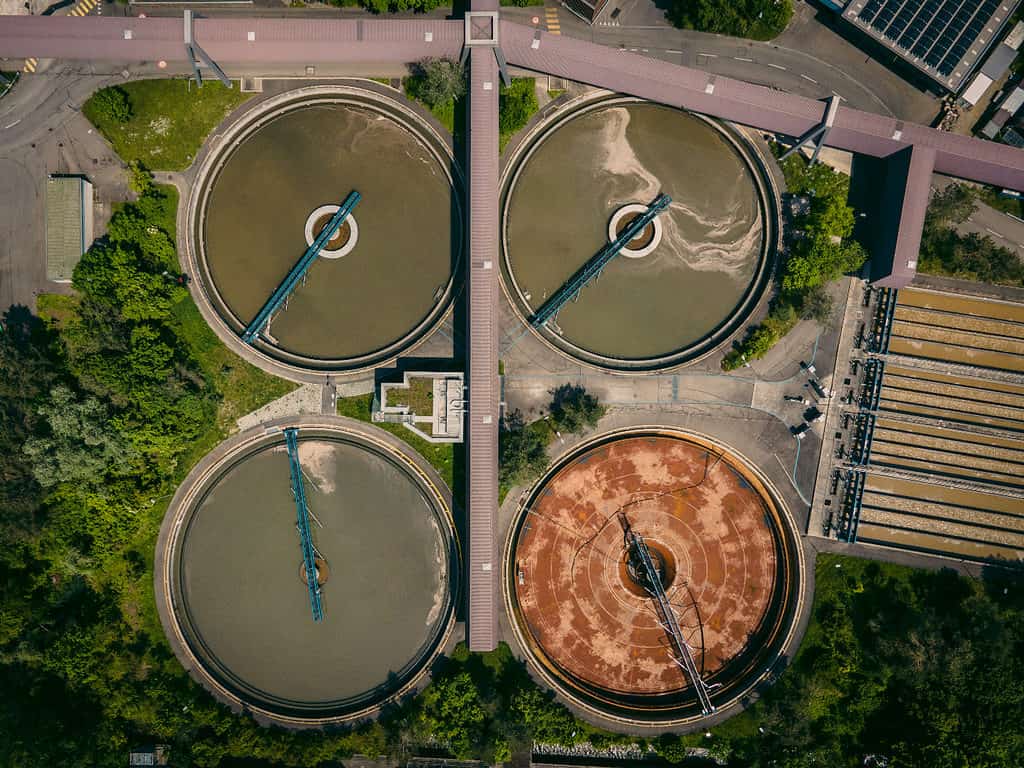We use a lot of concrete. If concrete were a country, it would be the third greatest emitter on Earth, behind only the United States and China. But for all its durability, concrete can also get damaged — and often does. We don’t just build and use a lot of concrete, but we spend a lot of time and effort to maintain it as well. But what if it didn’t have to be that way?
A team of researchers in Australia have found that you can get concrete to “self-heal” with microcapsules filled with water treatment sludge, enabling the material to withstand corrosion and even fill up emerging cracks.

Concrete is used for many things, from skyscrapers to sewage pipelines. We don’t think about the latter all that much but in truth, our cities would be nothing without sewage. We tend to think of roads as the bloodlines of our society, but sewage is a more likely candidate. Sewage provides an efficient and manageable way to discharge all the wastewater we inevitably produce in our homes and industry. All modern cities have sewage, and large cities have extended, complex sewage systems.
Concrete is the most widely adopted construction material in sewerage, but sewage is not a good environment for concrete. In fact, the acidic environment and the bacterial populations associated with wastewater make concrete prone to damage, cracking, and corrosion. The wastewater etches the surface of the concrete, penetrating the surface, and from there, corrosion starts.
Repairing concrete is, almost always, expensive and complicated. In underground sewerage, that’s even more complicated, and repairs of deteriorating concrete are often short-lived, with 20% failing within 5 years, and 55% failing within 10 years. So University of South Australia sustainable engineering expert Yan Zhuge is trialing a different solution, fighting fire with fire — or in this case, waste with waste.
Zhuge wants to use microcapsules filled with a type of sludge water to trigger concrete self-healing. The casing of the microcapsules is pH-sensitive, and the capsule contains calcium hydroxide powder, in addition to the sludge water. The combination triggers when the pH is such that the concrete could be damaged and makes the concrete resistant to microbially induced corrosion.
“Sludge waste shows promise to mitigate microbial corrosion in concrete sewer pipes because it works as a healing agent to resist acid corrosion and heal the cracks,” Zhuge says.
“This technology will not only extend the lifetime of concrete structures, saving the Australian economy more than $1 billion, but it will promote a circular economy as well by reusing sludge that would normally end up in landfills,” Prof Zhuge says.

There are other ways to fight corrosion, but they are costly and contaminate the environment. Coating for concrete can also reduce the damage, but only temporarily. This solution of mixing concrete with another solution is more sustainable and also cheaper — the researchers estimate that in Australia alone, this could save $1.4 billion in yearly repairs.
“Improving the concrete mixture design is the preferred method for controlling microbially induced corrosion. Using self-healing concrete that can seal cracks by itself without any human intervention is the solution.”
“We are confident this novel self-healing concrete based on advance composite technology will address issues of sewer pipe corrosion and sludge disposal in one hit,” Zhuge says.
However, the long-term sustainability and durability of the mixture are yet to be proven. But if it does work, and it is durable, then it could save a lot of taxpayer money. In Australia alone, the total length of sewer pipes is over 110,000 km (68,350 mi) and finding a way to get them to self-repair isn’t as unlikely as it sounds. This approach has been used in the oil industry for years, though in a different chemical environment.
Was this helpful?



